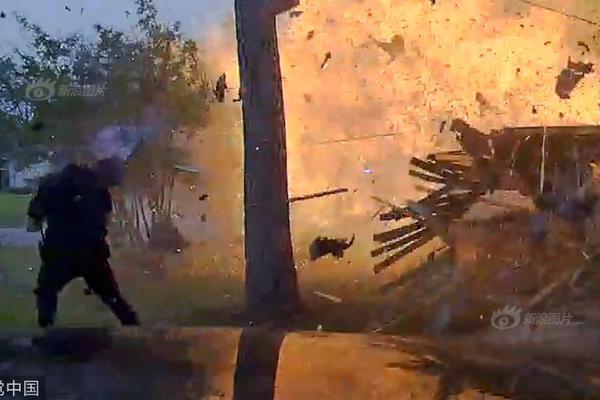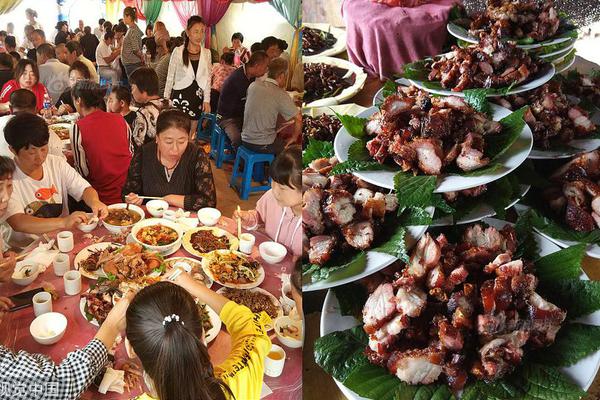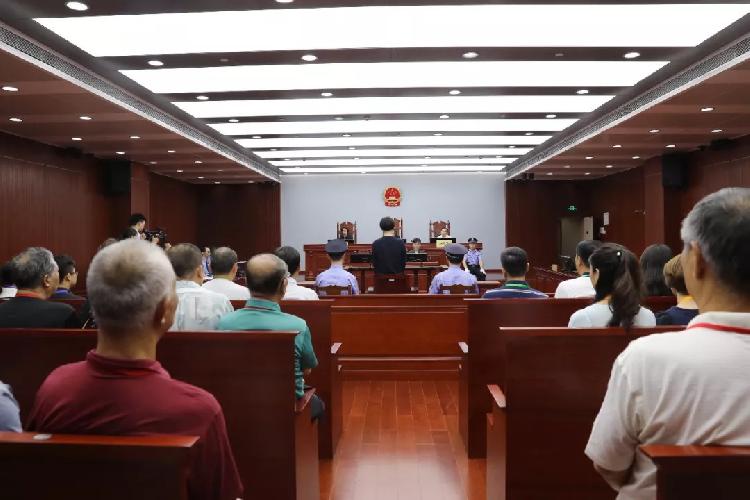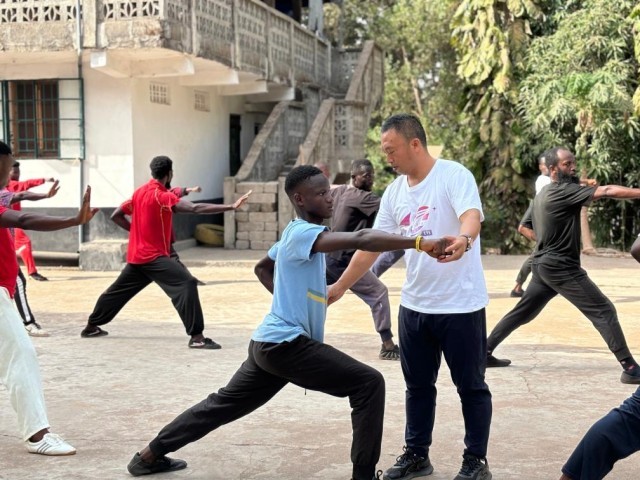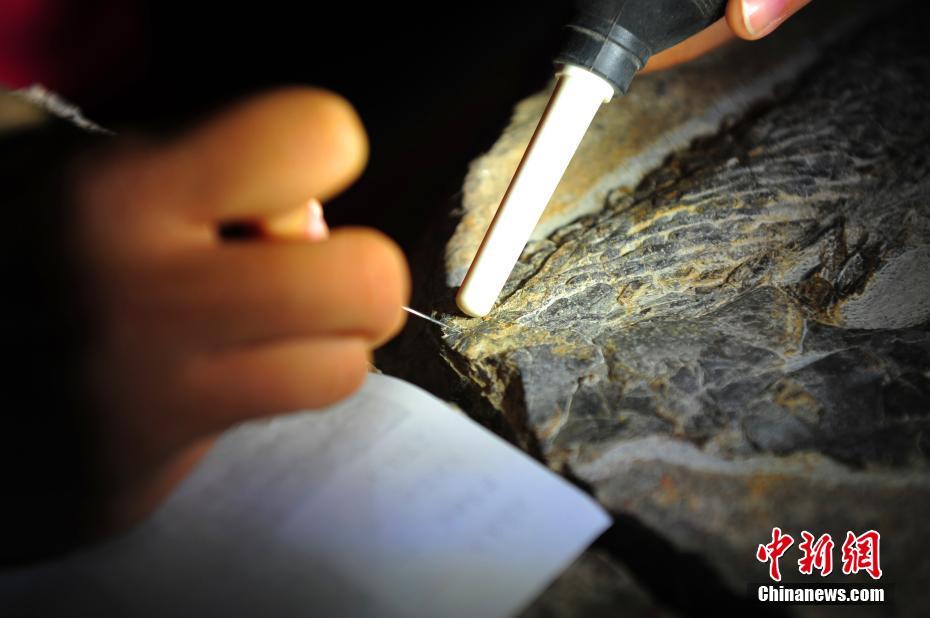【westminster bridge】Archaeology as a weapon? — Western countries vs China
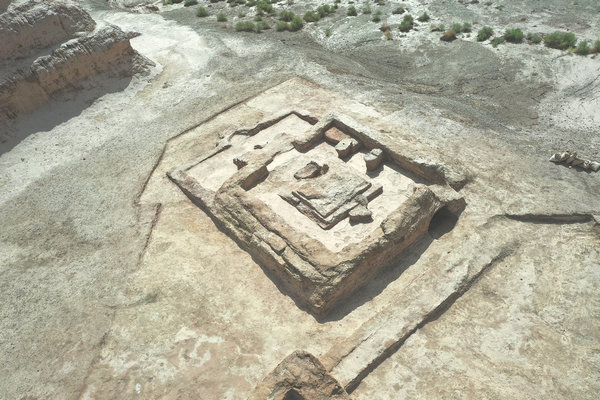
A bird's-eye view of the foundations of the Mo'er Temple Site in Kashgar, Xinjiang Uygur autonomous region. [Photo provided to China Daily]
Recently, the British news magazine The Economist published an article criticizing "the use of archaeology as a weapon by the Chinese government" in the context of the archaeological excavation at the Mo'er Temple Site in Xinjiang Uygur autonomous region. This article reflects the common bias of the Western world towards the Chinese archaeological community.
Modern archaeology is a discipline that uses scientific methods to study the remains and artifacts of the past in order to understand human origins and gain knowledge for the future. However, as powerful nations often try to establish their historical legitimacy, archaeology has frequently been used as a weapon by those in power. The role that Western archaeology has played in the formation of Western-centric perspectives is no exception, and this can be seen through four main aspects:
Firstly, it is in the tradition of classical archaeology. Since the Renaissance, European scholars have sought to find their roots in the past. Through the systematic collection of ancient artifacts and large-scale excavations of ancient cities like Pompeii, the long-lost Greco-Roman civilization reemerged and was viewed by the modern Western countries as the source of its own superiority.
Secondly, it is in the quest for human history during the prehistoric period. In the 19th century, scholars such as C. J. Thomsen questioned the biblical account of Creation through their study of the Stone Age and the development of the theory of biological evolution. This led to the progressive view of history replacing the degenerative view of history. Against this backdrop, social Darwinism, which regarded the West as the most advanced society, was born.
Thirdly, it is in the use "culture-history" research method. This approach aims to reconstruct the ancient cultural and ethnic lineages with archaeological remains, but has often been misused by racists. The research on the origins of the Germanic people by German archaeologist Gustaf Kossinna, for example, was later exploited by his disciples to support Nazi Germany's theories of racial superiority and genocide.
Lastly, it is in the processual archaeology that became popular in the second half of the 20th century. This school of thought, based on multilinear evolutionism, seeks to study the universal laws of human social evolution through scientific methods. While it acknowledges the dynamic nature of evolution, it insists on the uniformity of these laws, which are based solely on Western experiences and neglect other voices in human history.
These examples demonstrate how Western archaeology has been used as a weapon by those in power.
In contrast, Chinese archaeology has never been used as a weapon to undermine others.
Chinese archaeology originated in the 1920s as a result of the introduction of Western knowledge into China, and its main line of development was established by Chinese scholars who had studied abroad, such as Fu Sinian, Li Ji, and Liang Siyong. The critical examination trend of ancient history during the New Culture Movement weakened the credibility of Chinese ancient history but failed to provide a new foundation. Scholars from the Institute of History and Philology with Academia Sinica took up the challenge and attempted to reconstruct ancient history using scientific archaeological methods in order to trace the roots of Chinese civilization.
After the founding of New China, Chinese archaeology continued the mission of reconstructing ancient history and gradually built a spectrum of ancient Chinese material culture through the study of archaeological materials. It also focused on discussing the productive forces and relations of productions, economic foundations and superstructures, as well as the stage characteristics of social development in ancient China. This reflective understanding of national heritage and the expectations for the future are undoubtedly valuable.
Since the 1980s, Chinese archaeology has shifted its focus from "reflecting on national heritage" to "reconstructing values". For example, prominent archaeologist Su Bingqi summarized the characteristics of Chinese civilization as being "pluralistic and integrated" and "like stars shining all over the sky", and presented a trilogy of the origins of Chinese civilization as "ancient states, regional states, and dynastic states". Academic initiatives such as a project to trace origins of the Chinese civilization have reevaluated the complexity of prehistoric Chinese society and outlined the continuity of Chinese cultural lineage.
From a comparison between Chinese and Western archaeology, we can see that the criticism by The Economist is unjustified.
Firstly, the early stages of Chinese archaeology had the intention of "tracing back national history", but this should be understood as a reaction against colonialism and the influx of Western knowledge. From the perspective of cultural pluralism advocated by the Western academic community today, China, as a civilization beyond the Western world, defending its historical roots is beneficial for achieving cultural diversity in the world.
Secondly, the Western countries mistakenly assume the existence of a "Sino-centric view" as a counterpart to the "Western-centric view" and therefore hold hostility towards the Chinese academic community. However, Chinese archaeology has already surpassed this narrow view. Classic theories such as "pluralistic and integrated pattern" describe Chinese civilization as an open system with multiple structures. Furthermore, Chinese archaeology recognizes the contributions of foreign influences in agriculture, technology, religion, as well as the continuous interactions between China and its neighboring regions as important factors in the development of Chinese civilization.
Lastly, when it comes to the Mo'er Temple Site and archaeological research in Xinjiang, Xiyu, or the western regions (a term used to describe today's Xinjiang and Central Asia in the past) had already been within the sphere of influence of central dynasties in ancient China as early as the Western Han Dynasty (206 BC-AD 24), as evidenced by administrative mechanisms, language and written records, and cultural customs. Although Buddhism originated in India, the Buddhist culture at the Mo'er Temple Site exhibits strong characteristics of China's Central Plains, resulting from Buddhism's eastward transmission to Central Plains and subsequent flowing back westward combining Chinese features. Scholars like James A. Millward, who deny the position of Xinjiang in Chinese civilization based on the argument that the political and military control of the central dynasties in Xiyu was not thorough enough, fail to understand the concept of diversity and adhere to a nation-state mindset that emphasizes the boundaries of nation, ethnicity, and culture must coincide. They are the true proponents of Central Plains centrism.
In conclusion, Chinese archaeology is not a weapon but has already developed a perspective that transcends the notion of civilization centrism.
Ding Geng, a PhD candidate of archaeology at Peking University
Editor: Zhang Zhou(责任编辑:探索)
- ·Infographic: Achievements China has made in advancing Africa’s modernization
- ·继扫地机器人、洗地机之后,清洁电器下一个“爆品”会是谁?
- ·文字游戏:探索未知的乐趣
- ·iPhone 16 Pro系列将标配四重反射棱镜相机:大大减少相机模组厚度
- ·Scenic view of Changning City in C China’s Hunan
- ·折叠体验由你定义 三星Galaxy Z Fold6携创新Galaxy AI正式亮相
- ·iPhone 16 Pro系列将标配四重反射棱镜相机:大大减少相机模组厚度
- ·人气最高的文字游戏:十大经典之作推荐
- ·Zibo in E China witnesses harvest season of kiwi fruits
- ·特斯拉 Robotaxi 产品推迟至今年10月发布,股价大跌
- ·Pakistani PM kicks off nationwide special anti
- ·十大经典文字单机游戏:哪个更好玩?
- ·《Z世代白皮书》发布 7成Z世代看好AI对工作效率的提升
- ·合肥高科申请一种洗衣机转子零部件摆放架专利,方便取用存放箱内部的洗衣机转子
- ·香港警方捣破跨国赌博集团 涉案金额约2.5亿港元
- ·探索文字解谜游戏的趣味与挑战
- ·直播电商出海:旧模式难掘新金矿
- ·十款最受欢迎的文字游戏推荐
- ·China's energy transition: Developing new quality productive forces in energy sector
- ·探索文字解谜游戏的趣味与挑战



